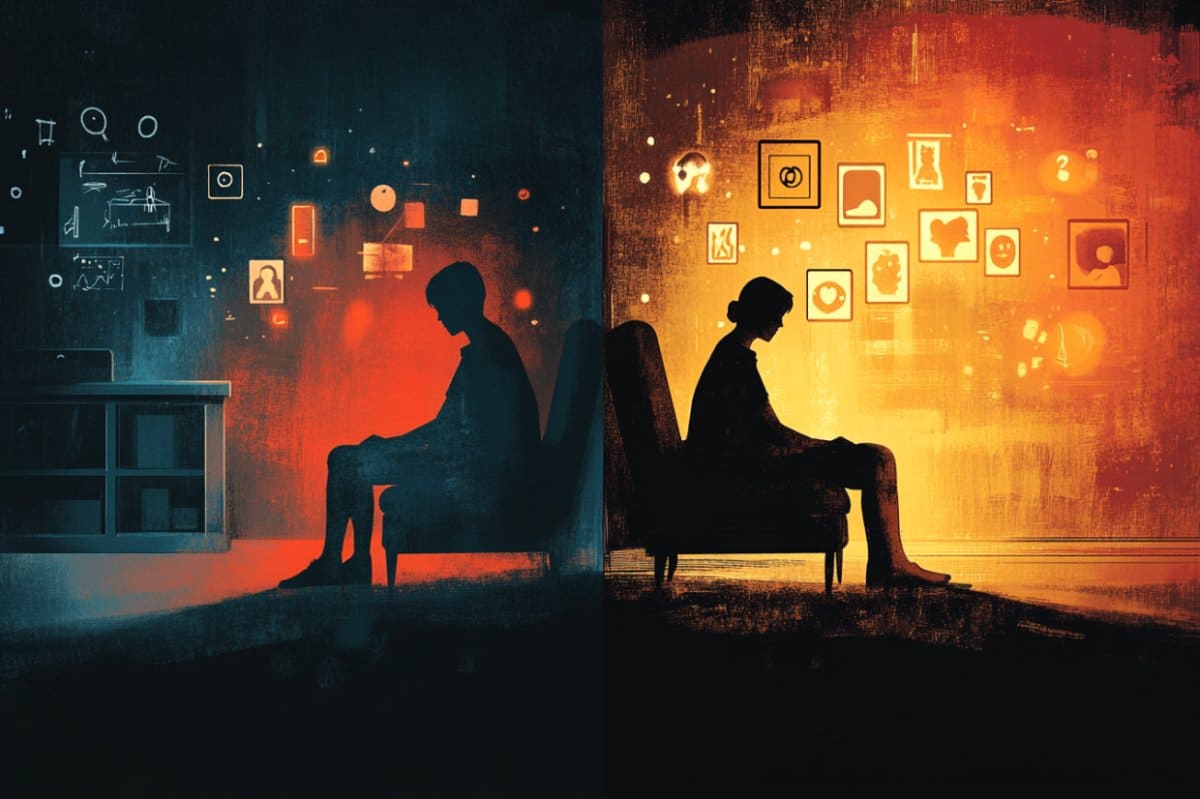Summary: A new study in 20 European countries shows that people in the weakest income tranches are much more likely to feel alone than those with higher income, even if they socialize as often. Loneliness was closely linked to a group of defensive symptoms – bread, fatigue and bad humor – which were particularly serious in the poor.
The study revealed that social connection has helped to reduce these symptoms, but the protective effects were the strongest for those who live in poverty. These results suggest that social relations are crucial to stamping the health impacts of the economic disadvantage and highlighting the need for targeted community support in low -income populations.
Key facts:
- Loneliness income gap: 49% of low -income individuals felt alone against 15% of high income peers.
- Health toll: Solitary people in poverty have shown the highest levels of pain, fatigue and weak mood.
- Social stamp: Solid relationships have the smallest symptoms in the poorest groups.
Source: University of Oxford
A new study by the University of Oxford, published in Public healthshows that Europeans in the most income deciles are much more likely to feel alone than those of the most income deciles, despite no difference in the frequency to which they socialize.
In addition, poverty and loneliness were strongly associated with higher scores on a group of defensive symptoms characterized by high levels of pain, fatigue and low mood.
The study also showed that the effects reducing the symptoms of social connection were the strongest for people living in poverty.

These results have important implications for social, economic and health policy, which suggests that solid social relations can serve as important tampons against some of the health health consequences.
The cluster of defensive symptoms refers to a set of frequently co-occupied symptoms and mutually reinforcement which, included from an evolutionary perspective, represent the body’s response to danger and rarity.
Humans have evolved into groups that have enabled resources and protection against danger; When we feel socially excluded or isolated, our body reacts with a set of symptoms that are intended to protect ourselves, for example pain helps us protect ourselves against injuries, and fatigue and low mood can help us keep energy.
Researchers, led by Dr. Arran Davis of the Museum of Anthropology and Ethnography of the Museum, University of Oxford, examined data from a survey of 24,505 respondents in 20 European countries.
The main conclusions include:
- People in the most low -income decile were much likely to declare to feel alone in the last week that people in the most income decile; 49% compared to only 15%. This, despite the difference in time in the various deciles of income, declared socializing with family, friends and colleagues.
- People who declare that they feel lonely have higher scores on the symptom cluster. The average lonely person has a symptom cluster score of more than 67% of non -solitary people. However, the difference in the average score of symptoms combinations between lonely people and not lonely persons is significantly more important in the lowest income decile than the most income decile. The average lonely person in the lowest income decile has a symptom cluster score greater than 73% of non -Loney people in the same income decile. In the highest income decile, the average lonely person has a higher symptom cluster score than 65% of non -Loney people.
- 30% of the lonely individuals of the lowest income decile had high symptoms cluster scores, against only 2% of non -Loney people in the most income decile, which suggests that social relations play a particularly important role in the influence of the health results of people living in poverty.
- The relations observed between the level of income, loneliness and clusters of symptoms have been maintained even when we take into account things like life agreements and the matrimonial state.
Previous research has identified social relations of support as stamps with the negative effects of poverty.
The results of this study suggest that, as material resources decrease the importance of social resources increase, those who are both in poverty and by solitary cluster scores of the highest symptoms.
The main author, an evolving anthropologist, Dr. Arran Davis, said:
“The relationship between poverty and poor health is well established, and previous research suggest that loneliness can be as bad for you as smoking.
“Our study shows that for people who are both low -income and lonely, health costs are particularly marked. I hope that this study will inspire more research on the factors that conduct people to feel socially disconnected and to the development of policies that support strong communities in socio-economically disadvantaged fields. ”
About this news of the search for poverty and loneliness
Author: Lizzie DULORNE
Source: University of Oxford
Contact: Lizzie Dunthorne – University of Oxford
Picture: The image is credited with Neuroscience News
Original search: Open access.
“Associations between poverty, loneliness and a group of defensive symptoms characterized by pain, fatigue and weak mood” by Arran Davis et al. Public health
Abstract
Associations between poverty, loneliness and a group of defensive symptoms characterized by pain, fatigue and weak mood
Objective
Perceived social isolation is associated with increased pain, fatigue and depression. Other research has shown that pain and depression are more frequent in individuals with a low socio-economic status, and that social relations are particularly important for stamping the negative health effects of a low socio-economic status.
Study design
Transverse section.
Methods
We used a transverse sample of 20 colors of 24,504 respondents to the European Social Survey 7. Linear regression on several levels was used to test the effects of loneliness, income decile and their interaction on a variable of cluster of symptoms which was the average of respondents Z-Score on pain, fatigue and low humor mood.
We have hypothesized that loneliness and low income would be associated interactively with higher symptom cluster scores.
Results
Those of lower income deciles were much more likely to feel alone (48.7% in the lowest income decile; 15.2% in the most income), despite no difference in the time reported to socialization.
Linear regression on several levels indicated statistically significant associations in accordance with our hypotheses: (1) Solitary individuals mark 0.447 SD Higher on the pile of symptoms, (2) for each increase in income decile, scores of the pile of symptoms decrease by 0.022 SDand (3) Loneliness by interaction on income on the pile of symptoms (B = −0.018), the association between loneliness and the group of symptoms being the strongest among those of low -income deciles.
Conclusions
Loneliness and low income were associated with higher scores on the pile of symptoms, and social relations were particularly strong tampons of the pile of symptoms for people with poverty. The results inform the understanding of social and economic gradients in health matters.


